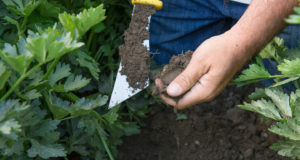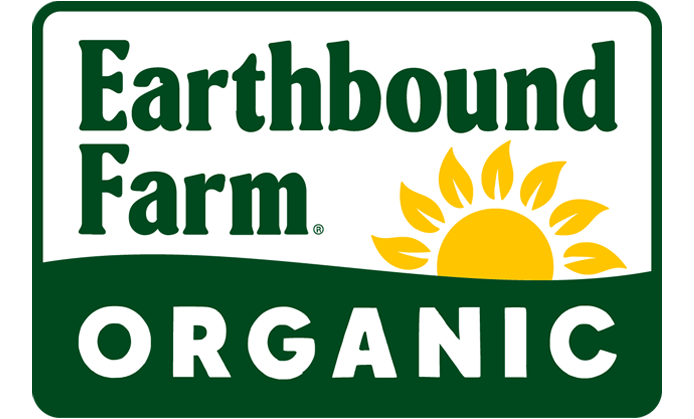If you’re like a majority of your fellow Americans, climate change is something you’re concerned about. And whether you know it or not, all that delicious, fresh, healthy organic produce you put into your shopping cart (whether online or in-store) is helping fight climate change. Well…at least the dirt it’s grown in is. See, it’s all about the benefits of robust, healthy soil, above and beyond even all that delicious organic food it produces. Organic farming has always been regenerative: organic soils get richer, healthier, and more productive the longer they’re farmed organically. Any of our farmers will be happy to tell you how true this is. Earthbound Farmer Stan Pura illustrated the point by talking about some of the ranches that we converted to organic in the early days “that were somewhat marginal in the beginning are so much more forgiving today because we’ve been building the soil health for two and a half decades.”
 The thing is, we love to eat. We need to eat. But agriculture is one of the major contributors to climate change. However, it can also be a source of mitigation. See, organic agriculture reverses climate change by pulling carbon out of the air and returning it to the soil. Research from the Rodale Institute Farming Systems Trial, the longest running, side-by-side comparison of conventional and organic agriculture, shows that, “If only 10,000 medium sized farms in the U.S. converted to organic production, they would store so much carbon in the soil that it would be equivalent to taking 1,174,400 cars off the road, or reducing car miles driven by 14.62 billion miles.” In short, organic farming practices generally contribute to healthier soil, which leads to less carbon dioxide in the atmosphere, slowing climate change.
The thing is, we love to eat. We need to eat. But agriculture is one of the major contributors to climate change. However, it can also be a source of mitigation. See, organic agriculture reverses climate change by pulling carbon out of the air and returning it to the soil. Research from the Rodale Institute Farming Systems Trial, the longest running, side-by-side comparison of conventional and organic agriculture, shows that, “If only 10,000 medium sized farms in the U.S. converted to organic production, they would store so much carbon in the soil that it would be equivalent to taking 1,174,400 cars off the road, or reducing car miles driven by 14.62 billion miles.” In short, organic farming practices generally contribute to healthier soil, which leads to less carbon dioxide in the atmosphere, slowing climate change.
How is that possible? It starts with something you may remember learning about in elementary or middle school: photosynthesis. In brief, people and animals breathe in oxygen and breathe out carbon dioxide. Plants take in that carbon dioxide and transform some of it into oxygen, releasing it back into the atmosphere for people and animals to breathe back in. The remaining carbon, however, stays in the plant tissue. When the plants die and decompose, the stored carbon goes into the soil. This is called “carbon sequestration,” and it contributes to the overall “soil organic matter,” or SOM.

Farming operations such as hydroponic, aquaponic, indoor greenhouses, and vertical farms can’t store any carbon in their soil because, well, they don’t have soil!
Photosynthesis and carbon sequestration happen whether the farm is certified organic or not. However, through organic farming and ranching practices, we can increase the speed and length of carbon sequestration, reducing the overall levels of carbon dioxide in the atmosphere.
Think of organic farming as feeding the soil and caring for it, instead of depleting it. All of these practices add beneficial nutrients and natural organic matter to the soil, create a thriving environment for helpful bacteria and microbes, and make the soil more capable of storing carbon long-term. So when you choose organic, you’re supporting a farming system that that’s planet positive in so many ways.
